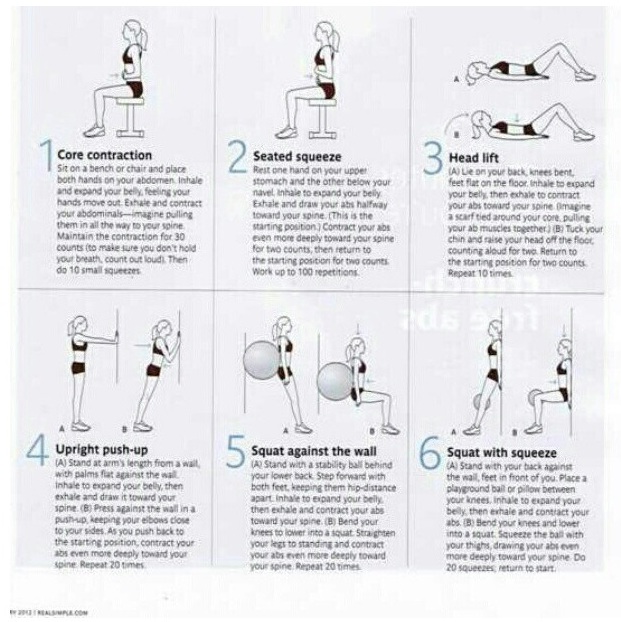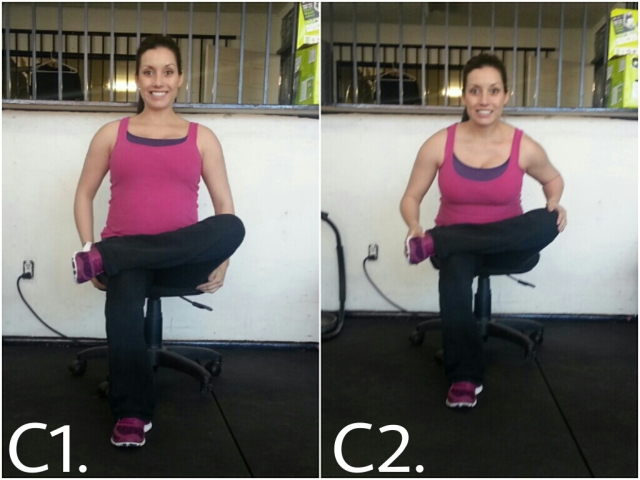Since you are reading this I’m sure you can relate to every other woman who’s given birth. Once baby arrives we look at our bodies and say “what the freak happened?!”
The moment you realize the baby weight you had gained was not “all baby”, makes you start questioning your friends who told you that. It doesn’t matter if you gained 20 pounds or 80 pounds our bodies change and once the excitement of the new baby dies down we want it fixed… now!
Well, I’m going to tell you how to lose it all in one week!
Just kidding, I’m not.
Wait, what?
Not the answer you’re looking? Here’s the dilio, social media is setting a standard for women to shed their baby weight in ungodly amounts of time and frankly I’m getting fed up with it.
Everywhere you look there are fit moms galore. It’s amazing, I love it! But what I don’t love is the pressure it puts on new mom’s who are pregnant or who have recently delivered.
First and foremost before I continue, let me just say, I don’t judge other moms when it comes to their choices on fitness and nutrition. I think it’s wonderful women set goals and push themselves to accomplish them.
That said; no pregnancy is the same, no birth is the same, no woman is the same, no situation is the same. I hope you’re getting my drift.
I do not want to cause any hurt feelings, so I will be referring to myself and my experiences. I’m no expert but I’ve done this a few times; four births and six pregnancies (two miscarriages) I do know a little.
After having Gatlin, baby number three, I took about 7 months off from training. My husband Josh and I had just purchased our gym and ironically owning a gym actually made it harder to find time to workout. I was breastfeeding, Gatlin had colic and Josh was training for a bodybuilding competition.
I chose not to stress about missed workouts or ones that never happened. I was also very worried about reducing my breastmilk supply. At one week old we had to give Gatlin formula and he was allergic. I was determined to pump for a full year. So I held off to really “hit it” until after my husband did his competition.
November came; I was 8 months postpartum, Gatlin’s bout with colic was over and it was my turn to get in shape. I set a goal to compete in March. Using my own knowledge along with Josh’s guidance, I was a woman on a mission and starting slowly back into it.
Fast forward 4 months later I accomplished what I set out to do. I stepped on stage bringing the best ME I could.
A few weeks before I stepped on stage I posted a picture that went viral on social media. It is below with the caption I added with it.
“One year ago today I stood in my kitchen cooking breakfast for my family…. with little Gatlin in my big belly lol! At the time the only thing on my mind was having a healthy baby boy. The next day he made his arrival (these pics are exactly 1 year apart).
After delivery my focus was NOT to lose weight or get in shape as fast as I could. My goal was to pump (breastmilk) for my baby for a full year. By doing this I knew I couldn’t cut calories… they were up in the 3000 range. So I took advantage of the hormones my body was producing naturally to build some muscle….which obviously worked out for both baby and I.
Now here I am 17 days out from my very first competition. I have NEVER had abs in my life!… and the best part about it is Gatlin still has his breast milk!
Hard work pays off… set goals and hold yourself accountable. Compare yourself to no one else but YOU. Make no excuses! Gatlin is still a horrible sleeper, he wakes up 2-3 times a night STILL! I’m tired, I have older kids I tend to also, and own a gym (owning it actually makes it harder to workout!) It may take you longer than a year… but my point is if you really want results you CAN get results. ♥”
Months passed, Josh and I decided to add a fourth and final baby to complete our family.I was determined to stay fit and healthy my entire pregnancy. I wanted to workout and eat right from start to finish. I even did a photo shoot for Muscle & Fitness Hers at 14 weeks pregnant. I wanted so badly to set a good positive example for other women.
My inbox was flooded with other moms wanting to know my secrets, also wanting know if I would bounce back immediately after having my baby. I constantly received comments like “you’ll be back in no time”, “you’ll leave the hospital with abs”.
I had A LOT to live up to!
I thought I had it all figured out. I didn’t change my training much I just lightened the weight.
At 17 weeks pregnant I did a quick leg workout. Afterwards Josh and I went to get an ultrasound of our baby. We were beyond excited to find out the sex.
Laying on the table we found out two things. 1. We were having a boy. 2. I was getting contractions right below my placenta. The first news was exciting, the second was actually frightening.
I would “cramp” after every workout for a few hours. They always went away so I didn’t think much of it but seeing the contractions and having two premature births (28 and 32 weeks) it scared the bejezzus out of me.
I decided to stop all training except stretching. I wasn’t going to risk the health of my baby.
Mentally that was a huge blow. My plans and goals were not going to happen. I would never compromise the health and well being of my baby. However, the pressure I had to “bounce back” was still there.
The pressure to get fit was stronger than ever. So I set new goals. I decided I’d wait until after I had Bostin THEN once I felt good I’d dive back in and be ripped with abs as soon as possible.Delivery was fairly easy on my body. I felt pretty good so things were looking up.I should have known better.
Even though my delivery was smooth, I dealt with postpartum hemorrhaging for 3 months after delivery. This took so much out of me but thanks to breastfeeding my period stopped for several months. Hallelujah!!
On top of that I seemed to have all odds against me….
— My husband was working 2 full time jobs. 124 hours a week as a firefighter/paramedic
— I went back to running our gym one week after delivery. With BOTH babies.
— Bostin was a horrible sleeper he woke up at least 4 times a night.
— I was pumping (breastmilk) so I had to get up every 3 hours.
— Gatlin was having a hard time adjusting to the new baby. So when Bostin did nap I gave that attention to Gatlin.
— Talon and Camryn, my older kids, were both is school and sports so I prioritize those first.
— Any spare time was used to train clients.
— I literally had no time or energy.
These are not excuses. These are the things I chose to prioritize and what my schedule allowed.
So once again 7 months flew by and I hadn’t really worked out. I was fortunate to manage my weight and shed baby fat through diet and tracking my macros.
Again, I decided to build my food intake up so when I decided to lean down I’d have a good start and not have to diet so extreme.
I was successful. I got my numbers very high, I was at 500g carbs, 90g fats, 120g protein. Eating about 80% whole foods and 20% whatever else I wanted. I was weighing 112-114 pounds.
January came and bodybuilding.com was putting on their 12 week 200k Transformation Challenge.I have always wanted to do one of their challenges. It was the perfect motivation and opportunity to really get back on track. Who isn’t motivated by $200,000!?I was still pumping breastmilk so I didn’t want to go to crazy. I kept my food intake the same but started weight training 3-4 days a week. I kept my workouts around 45 mins and lifted heavy.
Body fat started melting off fast! I was on cloud nine!!
Of course with the shift in hormones, my periods came back with a vengeance. Lasting 2 weeks and I was going through 2-3 packs of overnight pads. Ain’t nobody got time for dat!
It started about a week into working out again. Along with the periods I was getting horrible migraines almost daily.
I ran into my OBGYN at the grocery store and we got to chatting about training and working out. I mentioned the issues with my periods and migraines. He said it could possibly be from the hormones produced while breastfeeding.
Stopping breastfeeding wasn’t an option. I really wanted Bostin to get breastmilk for a full year. Even though I had a huge milk supply and freezer full of milk I was starting to become concerned about Bostin’s nutrition. He was starting to eat solid foods and drank as much milk as he wanted, at 7 months old he was only 13 pounds.
After weeks and weeks of going back and forth I decided to supplement breastmilk with formula to see if he’d gain more weight. He did wonderful with both!
I was still pushing hard with the 200k Challenge. I was determined!
Week 6 into the bodybuilding.com Challenge I was feeling like death. I set up an appointment with my OBGYN to get the Novasure Ablation and Tubal Ligation procedures done. I knew I was done having babies so I wanted my periods gone for good!
Two days before my surgery I received an email that I was the week 6 challenge winner! The challenge I won was for before and afters up until that point. This was super exciting! I did not expect to win this at all.
I also decided to stop pumping breastmilk completely. It was a hard decision but I knew my body couldn’t handle it anymore.
I knew the surgery would have me down from working out for a week or two. But I was so excited to finally feel good again! I set a goal to continue to eat healthy so my progress I had made physically wouldn’t all go out the window. As soon as my body was healed I’d get right back on track.
After the procedure I actually started feeling worse.
My periods were gone, but everything else seemed to go crazy.
Some of my symptoms:
Weight fluctuations from water retention 15-20 pounds.
Hair loss
Cold/ night sweats
Fatigue/insomnia
Emotional
Constipation
Nausea/Vomit for no reason
Increase hair on face
Hair loss in pubic area and armpits
Extremely oily hair to the point it’s causing acne on my scalp
Constantly sick
Virtigo
Just to name a few things….
















